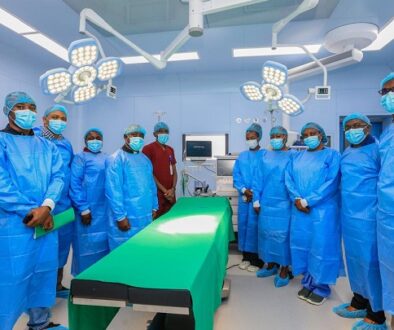NWSC starts treating Namugongo ‘holy’ water

CAPTION: A christian takes the Namugongo water believed to be holly. (File photo).
By our reporter
NAMUGONGO – National Water and Sewerage Corporation has said the organising committee for the annual Namugongo Martyrs’ pilgrimage has asked them to start purifying the “holy water” pilgrims usually use and also fetch to take back home.
Mr Samuel Apedel, the head of corporate communications at the National Water and Sewerage Corporation (NWSC), yesterday said every year, the national organising committee asks them to treat the water in readiness for the pilgrims.
But this year, they had to de-sludge the Kayanja Lake at the Catholic shrine because it is an open water source that absorbs debris such as leaves and contains mosquito eggs and larvae, among others. Thus, the water authorities are duty-bound to ensure the water is suitable for human consumption.
“The national organising committee always requests us to treat the water before the pilgrims arrive. We have checked that our sewerage system is working, the toilets are working, our 15 public taps are working, and the water tanks have been cleaned. In January, we de-sludged Lake Kayanja and have also cleaned our water reservoirs at the Anglican site,” he said.
Yesterday, NWSC staff were seen at Lake Kayanja at the Catholic Shrine applying chlorine in the water to disinfect it before pumping it into water tanks where the pilgrims interested in taking some of it back home will now be fetching it from water taps. Asked why they were treating the “holy water”, the NWSC supervisor of the exercise who preferred anonymity to speak freely because he is not authorised to speak to the press, said when they assessed the quality of the “holy water“ using samples collected from different points in January, they found a high load of organic and microbial matter.
When they tested the water again in mid-May, they found high levels of contamination, which is not characteristic of natural potable water.
“Natural water shouldn’t have salmonella, faecal matter, ecoli, and it shouldn’t have a pH of more than 10 Coliform units per 100mls. It is not safe to consume water in that state unless it is boiled or treated because it poses health risks to human beings,” the NWSC official said.
Asked to name the source of the water, he said it is a combination of water from underground wells and rainwater and being that the water is stagnant, the water in the lake is prone to contamination from different sources. That is why they de-sludged the lake earlier this year and all the dirt they collected from the lake was used to fertilise trees that have been planted around the shrine.
Every year, pilgrims carry millions of litres of water collected from underground wells located in the two swampy sites. They believe that the water has healing powers and performs miracles when used back home. Until a couple of years ago, collection of water from the sources had been chaotic as the pilgrims used rudimentary means to access the water, which would leave the surroundings of the wells in a messy state since they are bordered by clay.


